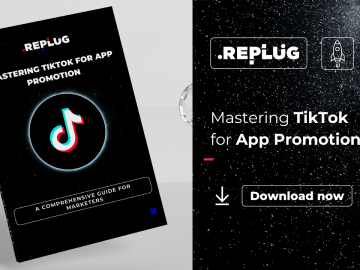As the gaming industry continues to evolve, gaming studios are grappling with pivotal decisions about their next steps. Gone are the days of hypergrowth overnight, and instead, new micro-industries are thriving through hybrid monetization models. Adam Smart, director of product gaming at AppsFlyer, dives into how data tells more of the story.
As the gaming industry continues to evolve, gaming studios are grappling with pivotal decisions about their next steps. Studios are having to make critical choices regarding their future course as the gaming business develops more. We’re seeing a shift in approaches where the emphasis now is on a more integrated strategy with marketing involved from the get-go, in contrast to a development-first approach where marketing played a supporting role after the fact. This evolution is indicative of a more competitive industry, and thanks to the proliferation of expertise surrounding user acquisition and monetization has leveled the playing field.
AppsFlyer’s 2024 State of Gaming App Marketing Report, from which the data outlined in this article is pulled, sheds light on some of the most pressing issues facing gaming developers, marketers, and how the industry is in the midst of adaptations for the next stage of growth. Gone are the days of hypergrowth overnight, and instead we’re seeing new micro-industries thrive through hybrid monetization models. As always, data tells more of the story.
The user acquisition arms race
In 2024, app developers in the US spent a record-high $12.2bn on user acquisition (UA), accounting for nearly 40% of the $29bn global ad spend. Numbers like this only underscore how competitive – and lucrative – the gaming industry has gotten. We’re seeing spending like this thanks to acquiring and retaining players becoming more challenging and costly than ever. As developers pour more resources into UA, they are also becoming more strategic, focusing on long-term player value rather than just short-term installs.
To navigate this landscape, studios are increasingly turning to user acquisition managers early in the development process. These experts provide critical insights into what will drive revenue and capture player interest, ensuring that marketing strategies are aligned with game design from the very beginning. This collaboration is essential for maximizing the return on the significant investments being made in user acquisition.
The dominance of match-3 games
Despite the perception that match-3 games are a tired genre, they continue to dominate the mobile gaming landscape. In 2024, these games commanded $8.65bn in ad spend, outpacing other popular genres like strategy ($4.57bn), RPG ($3.84bn), casino ($2.72bn), and simulation ($2.03bn). This dominance indicates that while innovation is crucial, there’s still a massive market for well-executed, familiar gaming experiences.
For studios, this trend offers valuable insight into player preferences. Understanding which genres are thriving can help developers make informed decisions about the types of games to create and how to market them. By leveraging data-driven insights, studios can align their development and marketing efforts to tap into the most lucrative segments of the market.
The iOS vs. Android dilemma
The mobile gaming market encountered significant challenges in 2023, marked by a decline in global downloads and revenue across major app stores. The App Store saw a 6% decrease in downloads, while Google Play faced an even steeper 11% drop. Gaming revenue on Google Play fell by 6%, with the App Store remaining flat, according to Sensor Tower. These overall declines were largely driven by the performance of games on Android. However, amid this downturn, one of the most intriguing developments in 2024 has been the shifting cost-per-install (CPI) landscape. In 2023, CPI costs on iOS dropped by 17%, while they surged by 48% on Android.
This CPI shift suggests a potential realignment in the mobile gaming ecosystem, with iOS emerging as a more attractive platform for developers due to lower user acquisition costs. For studios, this underscores the critical importance of platform strategy in user acquisition. As CPI costs fluctuate, making informed decisions about where to concentrate user acquisition efforts becomes more vital than ever. Early involvement from UA managers can be especially beneficial, helping studios allocate resources effectively between platforms to maximize returns in this evolving landscape.
The rise of hybrid monetization models
As the industry adapts to changing regulations and player behavior, hybrid monetization models are becoming the norm. In 2024, 43% of games used a hybrid model, up from 36% in 2023. This shift is largely driven by mid-core games incorporating in-app advertising (IAA) to offset the decline in in-app purchases (IAP). At the same time, hypercasual games, once reliant on IAA, are increasingly adopting IAP due to the impact of App Tracking Transparency (ATT).
This evolution in monetization strategies is a direct response to the challenges posed by the modern gaming landscape. For developers, understanding these trends is essential for building games that not only engage players but also generate sustainable revenue. By involving marketing and UA teams from the start, studios can design games with monetization in mind, ensuring they are well-positioned to capitalize on these emerging models.
The enduring power of in-app purchases
Despite the growing prevalence of hybrid models, in-app purchases remain a critical revenue stream to provide a recurring revenue stream. While only 5% of players may make a purchase, those who do are likely to spend again and again – 70% will make a second purchase, with half of those purchases occurring within the first three days after the first purchase.
Developing a well-crafted IAP strategy can be the difference between a financially successful game and one that can change the trajectory of the studio. Knowing that those who make one purchase will likely make additional buys, the ability to encourage initial purchases and foster long-term player loyalty is crucial for driving and sustaining revenue. By integrating marketing insights and a data-backed strategy into the development process, studios can create more compelling IAP offerings that resonate with players and encourage repeat purchases.
What’s next
While integrating marketing strategies early in the development process can enhance financial stability and revenue forecasting, it also carries the risk of entrenching existing methods and trends. This approach might lead to a focus on safe, proven tactics rather than exploring innovative opportunities for growth. To truly capitalize on potential and drive industry advancement, studios should balance their investment in current strategies with a willingness to experiment and invest in emerging areas with high growth potential. Embracing new possibilities and diversifying strategies will be crucial for fostering long-term success and innovation in the gaming industry.





